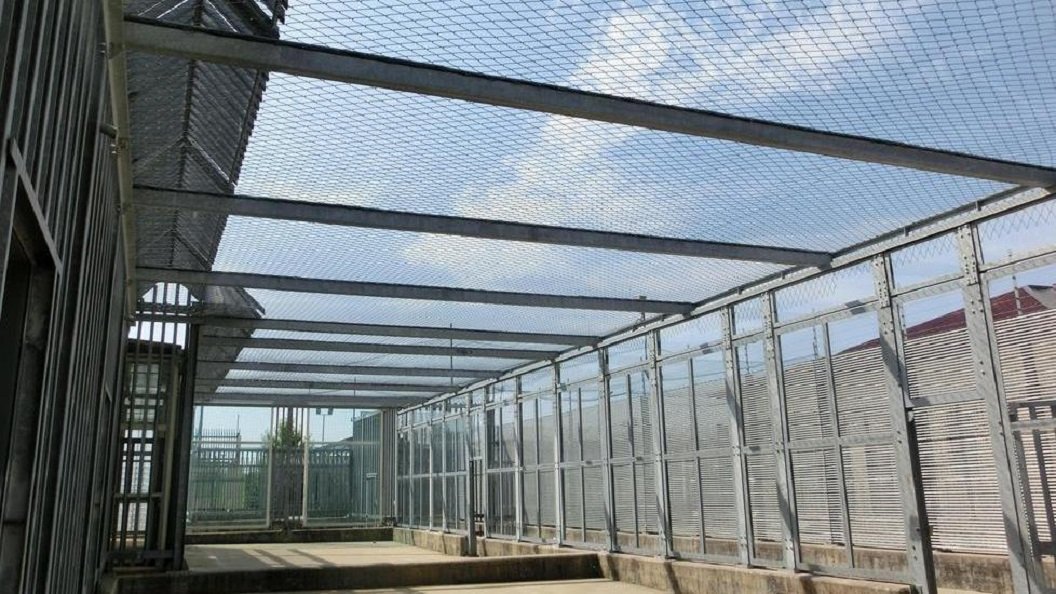Commentary
How the Lega treats refugees: ‘Wildlife cameras’ and maximum security prisons
These de facto maximum security prisons are for people who haven’t even committed a crime. The “irregularities” are purely administrative matters, and many only arose because of the Salvinian decrees themselves.

The Lega is still at it. The Regional Councilor for Security and Immigration (a combined portfolio that speaks volumes) for the Friuli-Venezia-Giulia region has said he wants to set up “camera traps” (anti-migrant wildlife cameras) along the border with Slovenia to counter the influx of migrants, particularly in the area of Trieste, where there are daily border crossings.
After he promised drones and barbed wire fences, Councilor Pierpaolo Roberti’s fantasies are only getting wilder with time. One would assume that the Lega councilor should be familiar with the actual powers of his office by now, but it is abundantly clear that this is not the case. He is obviously ignorant of the fact that such matters are not within the scope of the Region’s powers at all, and it would be impossible to allocate regional funding for surveillance and control systems.
Roberti claims that if camera traps were present, migrants crossing illegally would be automatically readmitted back to Slovenia—which proves he is also ignorant of current legislation, and probably doesn’t even realize that for many years now, there has only been an EU “internal border” between Italy and Slovenia, with all that it entails.
Meanwhile, it’s no surprise that the management of migrant issues in Friuli-Venezia-Giulia is getting worse every day, and the situation is becoming explosive. Particularly so in Gradisca d’Isonzo, where two prison-like facilities, CARA and the new Repatriation Holding Center (CPR), were opened quietly at the end of December and are now in operation side by side. They share the same four-meter-high concrete perimeter wall with embedded sharp glass fragments and barbed wire on top, a state-of-the-art video surveillance system, a double external fence and cages in the inner courtyards to keep groups of people isolated. Two detention facilities right next to each other: something that you don’t see anywhere else in northern Italy.
A few days ago, employees at these centers in Gradisca sent an open letter to the daily newspaper Il Piccolo describing the intolerable conditions there: “It’s time that people find out what is happening in these places forsaken by God and man,” they wrote. The co-op that manages the CPR is EDECO from Padua, which has been investigated for illegal management practices in the past. The workers write that “every week, two people come from Padua to eat, wash and sleep inside the CPR. They work 12 hours a day, including the night shift, when they alternate with a single employee on duty. In case there are problems, one of them wakes up the other one.” The same two employees also have to do the cleaning, but hygiene is non-existent and none of the workers is even vaccinated.
The meals arrive every morning from Padua, delivered inside steel containers, with one such portion having to last for both lunch and dinner. There is no clinic and no infirmary; a doctor is present for four hours a day, three days a week. As for cultural mediation, legal assistance or anything else, that’s out of the question.
These are the disastrous and fully predictable consequences of the Salvini decree, which sets the daily budget for anyone hosted at a CPR at €19, to the detriment of the services and the workers providing them, who, facing severe cuts in both hours and shifts, are earning no more than €500 to €600 per month: “We wonder how the state can pretend not to know anything about what’s happening inside this mechanism.”
“They bring us food like we’re little dogs!” a migrant locked up in the new Gradisca CPR managed to say during a short and dramatic phone call. There’s no dining hall or anything like that: nothing more than six-person cells where those waiting for deportation must remain locked up for most of the day, with only a slot in the door through which their food is passed.
These de facto maximum security prisons are for people who haven’t even committed a crime. The “irregularities” are purely administrative matters, and many only arose because of the Salvinian decrees themselves. Such dungeons are meant for locking up even those foreigners who had already gotten a residence permit, who were working or studying, and who had deluded themselves that they had found a place to rebuild their lives. It’s no wonder that episodes of self-harm and escape attempts are multiplying (around 10 people have managed to escape so far).
There is also a growing number of deaths of people who drowned in the Isonzo river. According to law, the region should be implementing social inclusion projects for foreigners, but the Lega majority doesn’t care: it’s better to boast that they’ll put up anti-migrant wildlife cameras for their sordid propaganda. Contrary to their law-and-order posturing, this is actually the most effective method to create disorder and insecurity—but that’s just how things go.
Originally published at https://ilmanifesto.it/fototrappole-per-migranti-il-confine-disumano-della-leg/ on 2020-01-17
